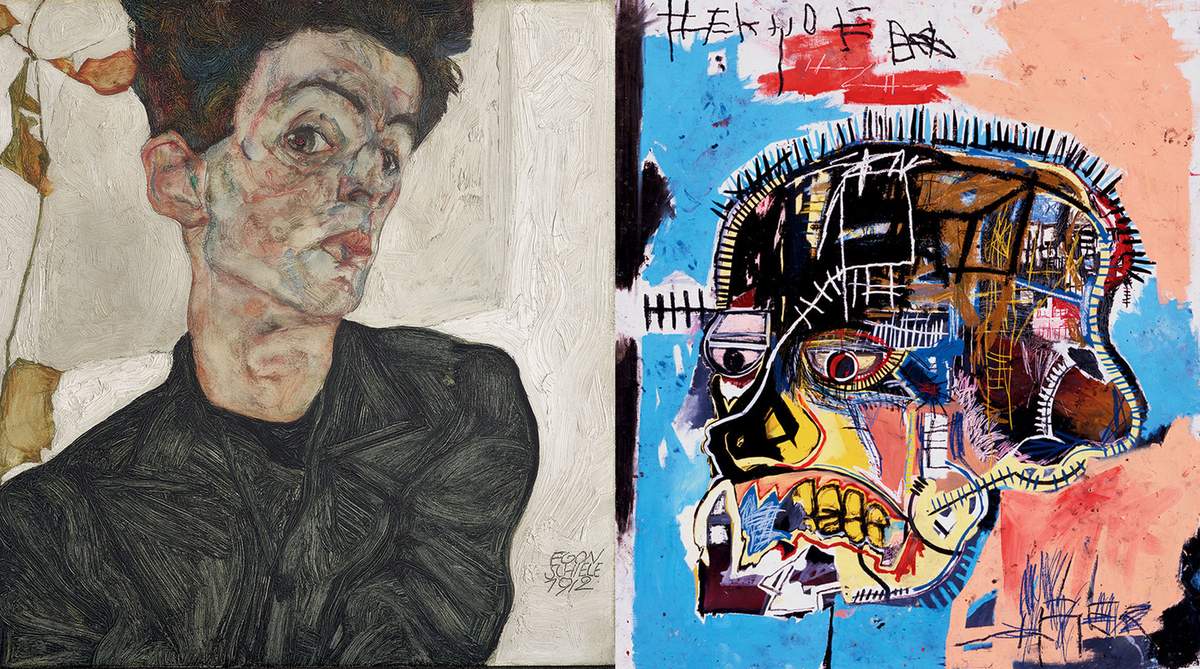Art in Times of “Cholera”. Two artists, profoundly different yet united by a revolutionary approach to their work and tied by a tragic fate: both died prematurely at the age of 28, during periods marked by two devastating epidemics: the Spanish flu and the HIV infection. Two outstanding artists: Jean-Michel Basquiat and Egon Schiele, connected by a similarly intense artistic and expressive force.
In 2018, the Louis Vuitton Foundation brought together their artistic and expressive power in an exhibition. Reflecting now on that show, which I saw two years ago and which deeply moved me, I find themes that remain relevant and connected to the context we are currently living through.
The Basquiat exhibition presented 120 of his works, spanning from the beginning of his career in 1981 up until his death in 1988. The Egon Schiele exhibition, born in Vienna in 1890, included 110 paintings. It was possible to admire numerous works by the man who was the absolute pioneer of Viennese Expressionism and a protégé of Gustav Klimt.
Basquiat began as a street writer; the walls of Manhattan’s Lower East Side were his canvas. Alongside Keith Haring, he elevated graffiti art in America to the same level as the works of great painters. In his early street works, there is a deep awareness of modern culture and a powerful urge to communicate his perspective widely, as one of the few artists of color.
In subsequent years, he abandoned street writing and began creating postcards. By a twist of fate, he met Andy Warhol in a SoHo restaurant while trying to sell him some postcards. From this encounter began his rise in the world of painting.
Unfortunately, Basquiat’s life and prolific artistic activity were abruptly cut short by a heroin overdose.
A short but tumultuous life gave Egon Schiele the inspiration to create paintings filled with melancholic eroticism. Despite his young age and the challenging historical period he lived through, the Austrian painter quickly distinguished himself with the ability of his works to convey intense emotions, allowing the fragile and tormented side of humanity to emerge.
Beyond facial expressiveness, Schiele’s subjects communicate anguish and suffering through their bodies, naked and gaunt, both erotic and melancholic. His paintings have no filters masking the human soul; instead, the images are brutally honest in their emotional impact.
The Viennese painter’s life was not only tumultuous, but his death was also tragic: he died just three days after his pregnant wife, both victims of the Spanish flu that claimed millions of lives during World War I. Before passing away, Schiele painted the work titled The Family, depicting himself, his wife, and their unborn child crouched together.
Biografia
SALVATORE MIRABILE | An aesthetic surgeon, art collector, mentor to artists, and citizen of the world, he divides his time between Italy and Brazil, as well as Paris and Barcelona.
